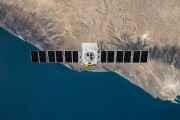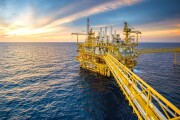
Explore by Topic
Stay Connected
Don't miss out on the latest technology delivered to your email every 2 weeks. Sign up for the DSDE newsletter.
This research developed a clear framework for assessing and selecting fit-for-purpose software. The study focuses on the role of a data-driven approach in the decision process, with application to operational software systems in the oil and gas industry.
Speakers from various disciplines and professions focus on industry trends, challenges, technology applications and advances. Scheduled DL events are in-person meetings only.
Foundation models are rapidly emerging as a transformative force across industries. While their effect on natural language processing and computer vision is well-documented, their potential in specialized engineering domains, particularly within the critical oil, gas, and broader energy sectors, is vast and increasingly recognized. This article explores how these powe…
-
Buoy-based camera footage, analyzed by artificial intelligence, can help reduce the risk of birds colliding with offshore wind farm turbines.
-
New strides in computer vision, well controls indicators, and BOP alignment were showcased at the recent Offshore Technology Conference.
-
Gautam Swami, manager of corporate R&D at NOV and SPE member, shares his experiences in building a career in oil and gas R&D, discusses how innovation is shaping the industry, and offers guidance to young professionals.
-
This study aims to thoroughly assess the influence of various completions, fracturing stimulation, and intrinsic reservoir properties affecting the productivity of 10 major unconventional plays while uncovering insights and trends unique to each play
-
The authors present an efficient workflow using an embedded discrete fracture model to simulate carbon-dioxide flow by use of conductive faults.
-
An innovative approach uses a random-forest-based framework to link logging-while-drilling and multifrequencey seismic data to enable dynamic updates to lithology parameter predictions, enhancing efficiency and robustness of geosteering applications.
-
Best practices are not static; they evolve alongside advancements that redefine what is achievable.
-
This paper describes the development of a method of predicting drillstring-friction coefficient during tripping operations that can be used for early warning of stuck pipe.
-
This paper provides guidelines for thermal modeling for carbon capture and storage projects in a depleted gas field.
-
The authors of this paper write that autonomous outflow-control devices can positively affect matrix acidizing by providing the best possible conformance.
-
Data mining techniques are unlocking new insights from the performance of thousands of Bakken wells. This article explores how those insights are helping refine completion optimization.
-
This paper presents a smart safety monitoring system to prevent accidents in environments with moving machinery at use on various global rigs.
-
The Norwegian technology developer is working to strengthen the value case for wired pipe through an upcoming offshore campaign with Vår Energi.
-
Real-time location systems have emerged as invaluable tools for enhancing safety and efficiency in the operations of oil and gas organizations. This paper investigates the various applications of the technology within the industry, highlighting its transformative effect on safety protocols and operational efficiency.



























